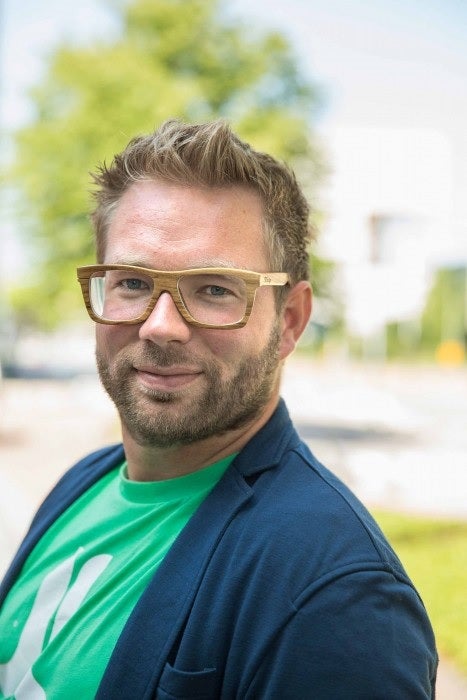Sjoerd Bruijn - Associate Professor Biomechanics

Course Description
In this course students are introduced to the fundamentals of three-dimensional kinematics, as well as the (more or less) standard application methods. The course can be seen as an extension of the Applied Biomechanics course where students worked with a 3D model and pre-processed algorithms. In this course, students will have to program the (basic) algorithms from scratch and / or construct script files that use Matlab toolbox applications. Much attention is paid to the interpretation of 3-D kinematics results and the pitfalls an confusions related to the (mis)use of 3-D methods.
The course will comprise three separate blocks focusing on:
- the definition and use of local coordinate systems in the calculation of osteokinematics;
- the use of technical marker sets as well as the practical implications of data processing, especially correcting for missing markers and;
- the calculation procedures for obtaining helical axes, needed for the definition of functional axes-based coordinate systems.
Study Characteristics
- Discipline: Human Movement Sciences: Sport, Exercise and Health (Research)
- Type of education: Lectures, computer practicals and tutorials
The three computer practicals are obligatory, but are not separately assessed. The first two blocks / practicals there are linked to optional in-term assessments. Each practical will contribute for 20% to the final score. - Academic skill: N/A
- Graduate School: N/A
- Start date: TBD
- End date: TBD
- Minimum number of students: N/A
- Maximum number of students: N/A
- Admission criteria: Contact the course coordinator for information on admission criteria: prof. dr. H.E.J. Veeger
- Concluding assessment: N/A
- Assessment type: N/A
- With Certificate: N/A
- Schedule info: N/A
- Number of lessons: N/A
- Total course duration in hrs.: N/A
- Sign up period: N/A
- Anticipated hrs of study: N/A
- Available to: PhD students VU (and VU RMA students)
-
Course Description & Study Characteristics
Course Description
In this course students are introduced to the fundamentals of three-dimensional kinematics, as well as the (more or less) standard application methods. The course can be seen as an extension of the Applied Biomechanics course where students worked with a 3D model and pre-processed algorithms. In this course, students will have to program the (basic) algorithms from scratch and / or construct script files that use Matlab toolbox applications. Much attention is paid to the interpretation of 3-D kinematics results and the pitfalls an confusions related to the (mis)use of 3-D methods.
The course will comprise three separate blocks focusing on:
- the definition and use of local coordinate systems in the calculation of osteokinematics;
- the use of technical marker sets as well as the practical implications of data processing, especially correcting for missing markers and;
- the calculation procedures for obtaining helical axes, needed for the definition of functional axes-based coordinate systems.
Study Characteristics
- Discipline: Human Movement Sciences: Sport, Exercise and Health (Research)
- Type of education: Lectures, computer practicals and tutorials
The three computer practicals are obligatory, but are not separately assessed. The first two blocks / practicals there are linked to optional in-term assessments. Each practical will contribute for 20% to the final score. - Academic skill: N/A
- Graduate School: N/A
- Start date: TBD
- End date: TBD
- Minimum number of students: N/A
- Maximum number of students: N/A
- Admission criteria: Contact the course coordinator for information on admission criteria: prof. dr. H.E.J. Veeger
- Concluding assessment: N/A
- Assessment type: N/A
- With Certificate: N/A
- Schedule info: N/A
- Number of lessons: N/A
- Total course duration in hrs.: N/A
- Sign up period: N/A
- Anticipated hrs of study: N/A
- Available to: PhD students VU (and VU RMA students)
Would you like to register or want to know more?
Please contact the course coordinator Sjoerd Bruijn: